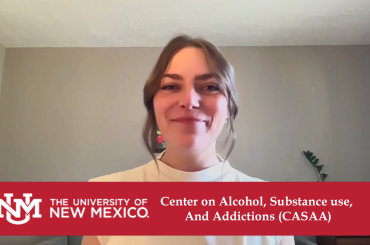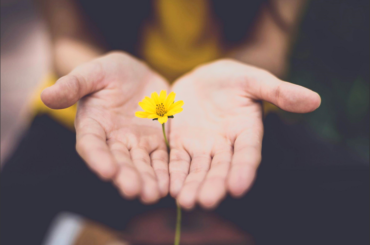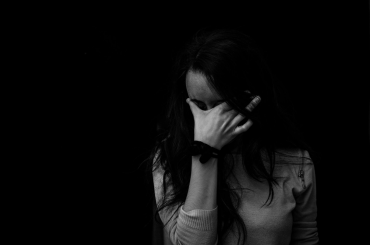Guarding Your Sobriety in a Media-Saturated World
Sobriety is hard enough without alcohol being woven into so much of what we see and do. From billboards and commercials to social media feeds and beloved TV shows, drinking is often portrayed as glamorous, carefree, even essential to having a good time. It’s made to seem like no big deal.
But for those in recovery, it is a big deal—and that truth deserves to be honored.
From emotionally charged scenes in movies to picture-perfect social media posts and ads that link happiness with drinking—these messages can quietly pile up. Over time, they may chip away at your sense of stability, making it harder to stay grounded in your recovery.
But you’re not powerless against it. You have the ability to take control. By setting mindful media boundaries, you can safeguard your sobriety and stay focused, strong, and unshakable on your path forward.
Identifying Media Triggers
Not all media is bad, but some of it can be harmful for those in early recovery from Alcohol Use Disorder (AUD).
The Problem with Alcohol in Entertainment
Hollywood often positively depicts addiction in cinema. The struggling artist drinking alone, the stressed-out executive pouring a drink after an arduous day, the best friends who “just need a drink” after something goes wrong.
It is everywhere. It is not just in movies. Music glorifies it, social media romanticizes it, and advertisements make it look like the key to an exciting life.
For someone in recovery, this messaging can be dangerous. Watching others drink, even fictional characters, can spark cravings, trigger memories, and stir up emotions that seemed buried.
Personal Triggers
Everyone’s triggers are different. Maybe it is the bar scene in your favorite TV show. Maybe it is scrolling through Instagram and seeing your old drinking buddies posting about another wild night out. Maybe it is a song that reminds you of the person you used to be.
It’s not about blaming a single post, scene, or message. What matters is acknowledging the power these subtle influences can have—because recognizing them is the first step toward protecting your peace and staying rooted in recovery.
Tracking your emotional responses to media can help. Notice what makes you anxious, irritable, or suddenly nostalgic for drinking. Keep a journal. Patterns will emerge. Once you identify them, you can start making changes.
Curating a Recovery-Friendly Media Environment
Once you’re aware of your triggers, you can start making space for healthier choices.
Unfollow, Unsubscribe, Delete
Social media can be relentless for people in recovery. Scrolling past pictures of people celebrating with alcohol, friends at bars, and influencers promoting the latest craft cocktail can make it feel like the whole world drinks, and you are the only one trying not to.
Try to limit your exposure. Unfollow accounts that glamorize drinking. Mute people who constantly post about alcohol. Unsubscribe from media that does not support your recovery goals.
Instead, consider filling your feed with uplifting voices. Follow sober influencers, recovery groups like In The Rooms, and mental health advocates. Surround yourself with content that reminds you of your strength rather than what you are missing out on.
Safeguard Your Digital Space
Social media is not the only problem. Streaming services, YouTube, and even your music playlists can influence your emotions.
Use content filters to block alcohol-related ads. Change your recommended content by watching more recovery-focused material. Be intentional about what you consume.
You have agency over what enters your mind. Make sure it is helping you, not hurting you. A digital detox could be just what you need.
Establishing Digital Boundaries
Sobriety requires intentionality. That includes setting clear digital boundaries.
Screen Time Limits
Mindlessly scrolling through social media can lead to comparison, cravings, and anxiety. Venturing into the “hidden internet” —unregulated online spaces, such as certain forums or the dark web — can expose you to harmful content that promotes substance use. It can make sobriety feel like a lonely, uphill battle.
Set limits, turn off notifications, and delete apps if necessary. Give yourself space to breathe outside of the digital world.
Safe Zones and High-Risk Moments
Some moments are more dangerous than others. Maybe it is late at night when loneliness creeps in. Maybe it is after a stressful day when the urge to numb kicks in. Maybe it is weekends when the world seems to be celebrating with alcohol, and you feel like you are on the outside looking in.
These are the times when your media choices matter the most.
Create safe zones. This could mean watching a favorite movie that is not triggering instead of scrolling social media, reading a book or journaling instead of listening to music that reminds you of your drinking days, or turning off all screens and going for a walk.
Whatever it looks like, be intentional about protecting yourself.
Building Positive Media and Accountability Habits
The goal is not just to avoid harmful content. It is to replace it with something better. Media is changing to be a safe space for many recovering from substance abuse problems.
Replace Mindless Media Consumption With Meaningful Activities
Recovery is not just about removing things from your life. It is about making healthy improvements.
Swap endless scrolling for hiking, painting, writing, or exercising. Replace TV binges with recovery meetings, journaling, or deep conversations. Engage in real life instead of escaping into digital distractions. Find the right wellness strategies that fit your lifestyle.
Stay Accountable with Soberlink
When indisputable proof of sobriety is needed, there is no better option than Soberlink. Known as an alcohol monitoring system, Soberlink’s technology provides accountability and rebuilds trust damaged by addiction.
Equipped with built-in facial recognition and advanced tamper sensors, Soberlink’s handheld devices can detect cheating attempts—such as using an air pump or having someone else test for you. Clients simply submit tests at scheduled times each day. Their identity is verified, and their BAC results are instantly sent via text or email to selected individuals—like a partner, sponsor, therapist, or friend—supporting accountability and helping them stay on track with their recovery goals.
Communicating Media Boundaries
Setting boundaries is one thing. Enforcing them is another.
Saying No To Triggering Content
You do not have to watch a movie just because everyone else is. You do not have to laugh when someone jokes about drinking. You do not have to be polite about avoiding things that jeopardize your recovery.
Watching Recovery-Supportive Media Together
Instead of skipping movie night entirely, suggest alternatives. Watch a documentary about recovery. Listen to a podcast about mental health. Share content that helps them understand your journey.
Conclusion
Sobriety isn’t just about abstaining from alcohol—it’s about building a life where drinking no longer feels necessary. That means being mindful not only of what you put into your body, but also what you consume mentally. The content you watch, listen to, and engage with plays a powerful role in shaping your mindset and influencing your recovery journey.
Take ownership of your journey. Set clear boundaries. Be intentional with the media you allow into your life. Protecting your sobriety isn’t about missing out—it’s about making space for a life that’s stronger, more connected, and more fulfilling than you ever imagined.









2 Comments
Nada
I have found this web site very informative. I would like to read more of these topics.